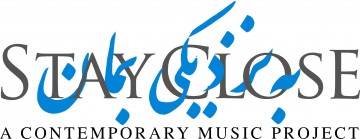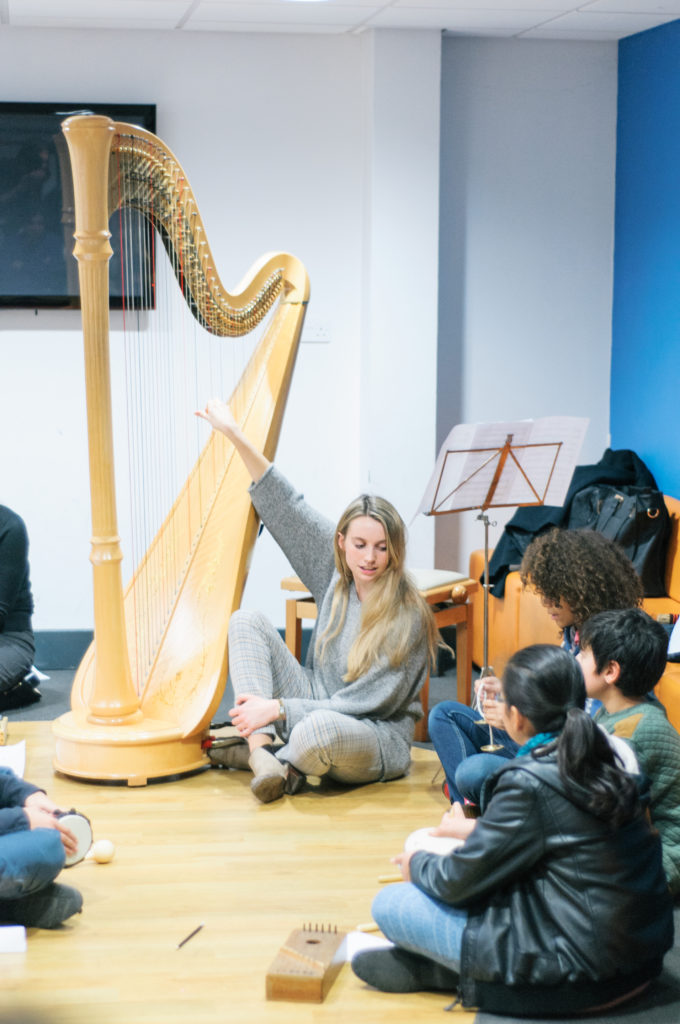Olivia from LPO on her experience of the workshops
Olivia Jageurs is a harpist currently taking part in the LPO Foyle Future Firsts Scheme. Here she talks about her experiences working with young people from IYDA as part of our workshop series.
This month I was lucky enough to play and assist in composer Soosan Lolavar’s Stay Close Project – a ten-month project promoting cultural exchange between British and Iranian musicians through contemporary classical music. Now in the second phase of her project, Soosan invited me to bring my harp to Woolwich Youth Club to play in a workshop series for 10-16 year olds who were all of Farsi-speaking descent.
In their first session with Soosan, the group read the Iranian children’s story The Little Black Fish. The simple (and beautifully illustrated) story is about a little fish who, curious and keen to know what is down the river, leaves his mother and sets off on an adventure. He makes several new friends along the way, but gets eaten by a pelican. He luckily works out how to escape and returns back to the river. The group discussed different emotions that arise in the story and drew up a long list that included feelings such as curiosity, fear of the unknown, excitement and freedom. The children then paired off and told each other stories in their own lives when they had experienced some of these emotions.
In the second session, myself, British-Iranian opera singer Honey, and Iranian qanun player Nilufar joined the group. Soosan led us all in a number of ice-breaking exercises including a great game where we each took it in turns to act as composer and conductor, building up different sounds only made through our voices. We then split into two groups and set about creating a piece representing some of the specific emotions previously discussed. Nilufar and I led one group and we worked together on how we could represent fear of the unknown, curiosity and excitement just using our voices to create a piece of music. The children decided to break the word curiosity into separate syllables and interjected those syllables over whispering sounds. Our representation of excitement (using rising broken chords) ended up sounding very traditionally classical. The really interesting bit was deciding how to notate our ideas together so we wouldn’t forget them – some of the youngest members of our group had some great ideas!
The following week we developed our initial ideas for the piece and my group focussed on just two emotions: curiosity and excitement. This session went really well as the children were really forthcoming with their ideas. One boy, who had been very quiet the week before, came to life with his imaginative ideas about how we could create the sound of a forest. Another boy who really enjoyed singing wanted to add a moving vocal line, so he did this as a solo while the others created a forest hum of leaves rustling and insect noises using their voices and small percussion instruments.
In this final session the children were asked to write their personal stories down; the stories they had told their partners in confidence in week 1. They were then asked if they could each read out their stories in the final performance of our group pieces in front of their parents. Very bravely, they all agreed! Soosan wrote some gentle but very memorable music to open and close the performance, which used the words ‘The Little Black Fish’ in English and Farsi to be sung by everyone, accompanied by the harp.
The end result was a very personal exploration by the group of their own emotions that they had accessed through the Farsi story, and which they performed with a confidence undoubtedly boosted through the previously unfamiliar process of creating experimental sounds and music together.
Photograph: Maximilian Hetherington


Leave a Reply